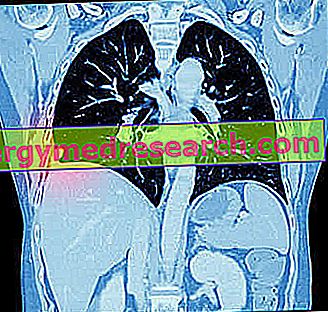By Dr. Stefano Casali
Hypoglycemia
Hypoglycemia is one of the least frequent causes of collapse as a result of sports activity and occurs when the production of glucose by the liver decreases after the glycogen reserves are depleted. It is a typical situation of endurance competitions lasting more than four hours.

Hypothermia
Hypothermia can be an unusual cause of collapse in athletes and occurs when the athlete stays too long in a cold environment and fails to produce sufficient body heat, necessary to compensate for the loss due to the surrounding environment. The most frequent cases are detected when the swimming part of the triathlon takes place in cold waters, when endurance competitions are held in cold and rainy periods or in all winter sports such as cross-country skiing. The severity of hypothermia is estimated with rectal temperature. Light hypothermia occurs at temperatures ranging from 32 ° C to 35 ° C and is accompanied by mental confusion and intense tremor. The cure is based on the athlete's protection from atmospheric events by replacing wet clothes and passively warming the body with a blanket and a cup of a hot drink. When the temperature drops below 32 ° C, the tremor (which generates heat) stops; if this occurs it is necessary to bring the athlete immediately to the hospital where more effective heating measures will be taken, such as the administration of intravenous hot fluid, hot oxygen and peritoneal dialysis with hot liquids. In even more serious cases, that is, with temperatures below 30 ° C, the athlete may seem apparently dead, only to recover after the warm-up phase.
Conclusions
The collapse associated with sporting activity is a fairly common occurrence in endurance sports, especially those held in hot-humid environmental conditions. The cause is almost always benign in athletes who collapse after the end of the race without loss of consciousness, with normal vital values and a normal mental state. This becomes more complicated if the collapse occurs during the race, if the athlete has general oscillating conditions and an altered conscious level. Proper and timely diagnosis becomes necessary in order to start the most appropriate treatment. Most cases find benefit with rest and fluid intake. On the other hand, the most serious causes of collapse, such as those associated with hyponatremia and heat stroke, can cause serious damage and even death, if not taken care of with the utmost timeliness and in the best way. It is essential that those who provide care during endurance competitions have some familiarity with athletes and know how to take care of the patient to prevent fatal consequences.
An appropriate and timely diagnosis is essential to be able to provide the necessary care. It is important that medical personnel are able to have the laboratory results related to blood glucose and serum sodium concentrations as quickly as possible. Based on serum sodium levels, the gravity of the situation is understood.



